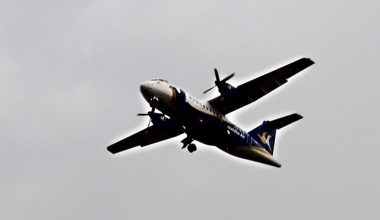Is Boeing 737 MAX 8 safe? Do you know about Boeing 737 MAX vs 737 ? Do you have any idea about Boeing 737 max 8 and other variants of MAX? Today, I’ll attempt to cover every aspect of the Boeing 737 MAX.
Read more: Boeing Vs Airbus, Which of these is the best, detailed overview
Boeing 737 MAX was first announced publicly on August 30, 2011, with promises of a sleek design, new winglets, and new highly fuel-efficient engines that could make it a top narrow body carrier. The Max 8 was then introduced on January 29, 2016, when it made its first maiden flight with a new and bigger CFM LEAP-1B engines and distinctive split-tip winglets.

The first delivery of the Boeing MAX series was a Boeing MAX 8, to be owned by ‘Malindo Air,’ which is a sister company of Lion Air, on May 16, 2017. Subsequently, it entered service on May 22, marking the date as the first commercial flight of Boeing MAX 8 in history. Just in the interval of one year after coming to service, 130 Boeing MAX 8s had been delivered to 28 different airlines. Flight hours logged in a year was 118,000 hours, with around 41,000 flights and flying over 6.5 million passengers.
7386 60981 A6-FMK 737-8 Flydubai #737MAX departing BFI on its delivery flight this evening. pic.twitter.com/nvO10NzZNj
— Woodys Aeroimages (@AeroimagesChris) July 1, 2021
The MAX 8 replaces the 737-800 with a longer fuselage than the MAX 7. The MAX 8 has a lower empty weight and higher maximum takeoff weight than the A320neo, making it a lot better than its main competitor. Hence MAX 8 was a successful fleet for the carriers and gaining reputations for its performance worldwide. No wonder the MAX became the fastest-selling aircraft for Boeing wrapping up around 5000 orders. During the delivery of their first Max, the company’s Chief Executive Kevin McAllister quoted and claimed that MAX would forever change the future of Single-Aisle aircraft.
The Boeing 737 MAX offers a maximum seat capacity of 210 and can fly up to 6,570 Kilometers. The aircraft wingspan is 35.9 meters, and its length is 39.52 meters. With the advanced wingtip split winglets in MAX 8, the manufacturer claimed to provide fuel efficiency and added mileage which properly was achieved after the aircraft were in the skies. 486 aircraft have been delivered till May 2021 worldwide.
Boeing and Airbus are engaged in a heated fight for the market for narrow-body aircraft. MAX successfully achieved the targets by attracting almost 4000 orders; The chief buyers were Alaska, RyanAir, United, Virgin Australia, Air Canada, Southwest.
The downfall of the 737 MAX
All around the world, MAX 8 was put on hold between March 2019 and December 2020. The Max series aircraft worldwide had to be grounded after two fatal crashes of 737 MAX, in which 346 people lost their lives. Lion Air Flight 610 on October 29, 2018, and Ethiopian Airlines Flight 302 on March 10, 2019, were the tragic crashes in which Boeing’s MAX aircraft was involved. By March 18, all 387 aircraft were banned from operations worldwide. After the Lion Air crash, the initial prediction was about faulty sensor data that could cause dangerous nosediving of the aircraft. Boeing had warned its customers and advised pilots with the standard recovery procedure. Until then, pilots were not aware of the Maneuvering Characteristics Augmentation System (MCAS), as there was never a mention of it in the Pilots manual and training.
#OTD in 2019: Ethiopian Airlines Flight 302, a B-737 Max-8, crashes in Addis Adaba-Bole (Ethiopia), All 157 aboard die. Crash was traced to control problems: due to a similar occurrence months earlier (Lion Air 610) the crash led to a grounding of the 737 Max-8 worldwide. pic.twitter.com/G06BfkrsIR
— Air Disasters #OTD by Francisco Cunha (@OnDisasters) March 9, 2021
In August 2020, the FAA instructed requirements for fixing in the aircraft systems and updated the pilot’s training, and on November 18, 2020, MAX was cleared to return to the service. The ban and grounding of aircraft cost Boeing around USD 20 billion in fines and more than USD 60 billion from 1200 canceled aircraft orders.
The Problem in the MCAS system
MCAS is a flight control improvisation system developed by Boeing to avoid dangerous flight attitudes that could occur due to the design changes in the new MAX aircraft. Specifically, a nose-up attitude could be developed in the climbing phase of flight due to its forward placed bigger LEAP engines as a design flaw in MAX. To correct this pitching attitude, the MCAS would sense the excessive pitching and automatically let the nose down by trimming the aircraft without informing the pilots. This system fault caused the dangerous nosediving attitude in the ill-fated flights and resulted uncontrollable steep diving aircraft, which the pilots could not override. Although an override feature to this MCAS was designed, pilots were unaware and unable to use the feature because no manual and no pilot training ever mentioned about it.
How MCAS problem was fixed
By May 2020, the company claimed it had conducted 135 test flights with updated systems and made significant progress towards the goal by adding flight control computer redundancy to MCAS and three additional layers of protection. Pilots need to be trained in simulators focusing on the MCAS.
Boeing now has made changes to the design as well as the MCAS system of its aircraft. The MCAS system has been limited to one nose-down input during a single event of a high angle of attack. Similarly, another AOA sensor had to be added to the aircraft. The MCAS would no longer accept inputs via AOA sensors unless the readings differ by greater than 5.5 degrees.
Is the Boeing 737-800 safe to fly?
After the continuous monitoring and endorsement of FAA, Boeing, and its pilots, 737 MAX has been awarded safe to fly even after the tragic incidents. Boeing and FAA have ensured that all the corrective measures have been taken. Pilots are now required to be well trained and well informed about the full functionality of aircraft systems.
Boeing 737 MAX has been flying again in most of the world after almost two years of getting banned, but except China.
China remains completing its assessment and has not established a timeline for any operating updates.
Accident Investigations
Lion Air Flight 610
Before the investigators came to know about the fault in the MCAS system, it was pretty observed that the crew had trouble controlling the aircraft. The crew members of the previous flight also came up with the problem, which they were hardly able to recover but did recover ultimately. The aircraft was equipped with a defective Angle of Attack sensor (AOA), which MCAS uses to determine the aircraft’s pitch angle. The maintenance record showed that the AOA sensor was just replaced before the last flight. A fault in the new AOA sensor fed MCAS with inaccurate data, i.e., a high angle of attack that activated the MCAS and resulted in an automatic nose dive when necessary. The crew continuously tried to recover from the nosedive; however, the MCAS pushed the nose down and ultimately let the aircraft crash into the ground.

Ethiopian Airlines Flight 302
The preliminary reports of Flight 302 mentioned the same struggle of the flight crew to control the continuous nose-down attitude of the aircraft in the climbing phase. The same problem as with Lion Air Flight 610 was predicted. MCAS was the main contributing factor for this crash too. Although the final report has not yet been on the air, all the findings and investigations suggest that the design flaw in MAX aircraft that triggers MCAS into action should be the reason for the crash. The black boxes of the crashed aircraft have been retrieved, and further investigations have been going on led by the Ethiopian Civil Aviation Authority.

Boeing 737 MAX 10
Boeing’s most significant 737 aircraft flew for two and half hours over Washington State for the first time last week. Whereas the 737 Max 10 is not scheduled to enter service before 2023, airlines anticipate its arrival with bated breath.
Two significant orders will help strengthen the 737 MAX program.
Boeing has received over 4,700 orders for the 737 series as of January 2019. By 2020, that number had dwindled to 3,282.
The list reduced nearly consistently throughout 2020 – including in December after Boeing received a deal from Ryanair for 75 more 737 MAX 200s. Nonetheless, even without Ryanair’s agreement, the backlog might probably be deteriorated much worse.

Thus far, 2021 has resembled the conclusion of 2020. During the first four months of this year, Boeing received 255 total orders for 737s. Nevertheless, its net orders for 737 family totaled only 24 aircraft simultaneously, whereas the company delivered 67 737s. As a consequence, the company’s 737 lists decreased by 3,282 to 3,239 aircraft. Boeing will have a lower net order overall year to date if not for Southwest Airlines‘ March purchase for 100 extra 737 MAX 7s. Southwest Airlines has placed an order for 34 Boeing 737 MAX 7 aircraft, which will be delivered in 2022, bringing the total number of MAX 7 aircraft purchased to 234.
United Airlines has agreed to buy 50 Boeing 737-8 aircraft from Boeing beginning June 29, 2021. United Airlines has decided to buy 200 more Boeing 737 MAX aircraft, including 150 of the biggest 737-10 type.
Boeing 737 MAX 8 for SpiceJet

SpiceJet had just 13 Boeing 737 MAX 8 aircraft operating throughout Indian airspace before March 2019, but the company had previously reached a contract for about 142 more similar aircraft, which was delayed. SpiceJet placed a $12.5 billion deal for about 155 Boeing 737 MAX aircraft in March 2018.








